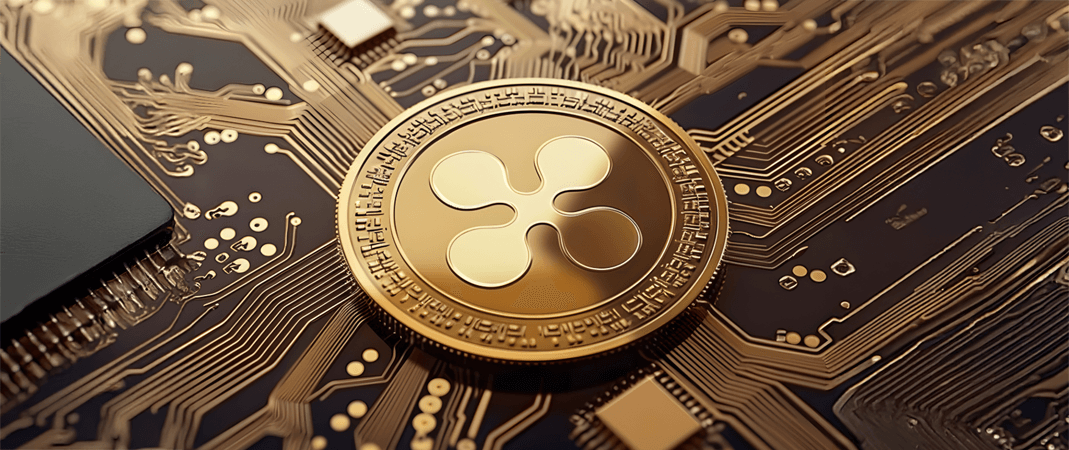
______________________________
In the ever-evolving landscape of technology and finance, one cryptocurrency consistently emerges as a contender for transformative potential: XRP. Designed by Ripple, XRP stands apart from the cryptocurrency pack with its unique infrastructure, speed, and versatility. While it’s commonly associated with financial transactions and cross-border payments, XRP has the potential to go beyond finance and play a pivotal role in revolutionizing the internet itself.
1. XRP The Foundation: Internet of Value
The internet as we know it excels at transferring information, but it falters when it comes to transferring value. Sending money online still relies heavily on intermediaries, such as banks and payment processors, which are slow, expensive, and fragmented. This is where XRP shines.
Ripple envisions an "Internet of Value" where money moves as seamlessly as information. XRP, with its lightning-fast transaction speeds (averaging 3-5 seconds) and minimal fees (fractions of a cent), can serve as the backbone for transferring value across borders, devices, and platforms. Imagine a world where anyone can send money to anyone, anywhere, without worrying about currency conversions, delays, or hefty fees.
2. Microtransactions for the Future Web
XRP could fuel the next wave of the internet by enabling microtransactions—small, instant payments that traditional systems can't efficiently process. This has profound implications for industries like:
Content Creation: Instead of relying on intrusive ads or subscription paywalls, content creators could charge tiny amounts (e.g., fractions of a cent) per article, video, or song consumed. XRP’s low transaction costs make this viable.
Gaming and Virtual Economies: Players could seamlessly trade in-game assets, purchase upgrades, or tip streamers in real-time without incurring prohibitive transaction fees.
Decentralized Applications (dApps): XRP could power blockchain-based applications where users pay only for the resources they use, such as bandwidth or storage.
3. Smart Contracts Without Complexity
While Ethereum is the go-to platform for smart contracts, XRP Ledger (XRPL) offers an underrated advantage: simplicity and efficiency. Developers can create trustless agreements using XRPL’s built-in escrow and payment channel features. These functionalities provide a more lightweight alternative to traditional smart contracts, enabling faster and more secure transactions for internet-based services.
4. Interoperability with Other Systems
The internet thrives on interoperability. XRP, through Ripple's Interledger Protocol (ILP), acts as a bridge asset, connecting disparate financial systems, blockchains, and even traditional networks. This ability to link different technologies could extend to the internet itself, facilitating:
Unified Digital Identities: XRP could streamline how users authenticate across platforms, reducing the reliance on centralized entities like Google or Facebook.
Seamless E-Commerce: XRP could become the standard for instant, cross-border payments in online marketplaces, enabling transactions across currencies without requiring buyers and sellers to use the same payment system.
5. Reducing the Carbon Footprint of Transactions
The internet’s infrastructure is energy-intensive, and adding financial transactions to its load can exacerbate this issue. XRP stands out as one of the most environmentally friendly cryptocurrencies. Unlike Bitcoin’s energy-hungry proof-of-work model, XRP relies on a consensus protocol that is not only faster but also significantly more energy-efficient. This aligns with the growing push for sustainable technologies, ensuring XRP could support the internet without harming the planet.
6. Online Communities and Crowdfunding
Imagine a decentralized internet where communities operate without corporate interference. XRP could enable frictionless crowdfunding and decentralized community management by providing a transparent and efficient way to pool resources or reward contributors. Platforms could integrate XRP wallets directly into their frameworks, empowering users to support creators and causes instantly.
7. Enabling the Web 3.0 Vision
Web 3.0, or the decentralized web, promises to give control back to users, moving away from monopolistic platforms. XRP, with its speed, scalability, and versatility, can help build this vision by providing a reliable payment and settlement layer for Web 3.0 applications. Whether it's decentralized social networks, peer-to-peer marketplaces, or blockchain-based data storage, XRP can facilitate trust and efficiency in these systems.
8. How to Invest in XRP
If XRP’s potential excites you, you might be wondering how to get started. Investing in XRP is straightforward and can be a great way to support its development while benefiting from its future growth.
Here’s how you can invest in XRP:
- Choose a Platform: Sign up on a reputable cryptocurrency exchange, such as Coinbase, Binance, or Kraken.
- Complete Verification: Most platforms require identity verification for security and regulatory compliance.
- Purchase XRP: Deposit funds and buy XRP directly with fiat currency (e.g., USD) or by converting another cryptocurrency.
Special Offer: Start investing in XRP today and get $20 free when you buy $100 or more XRP using this link: Get Your Free $20 Bonus Now At Coinbase!.
Final Thoughts: The Bridge to a New Internet
XRP’s potential extends far beyond its current use cases in banking and finance. Its speed, cost-efficiency, and ability to connect disparate systems make it a candidate for revolutionizing how the internet handles value. As the world inches closer to an interconnected, decentralized future, XRP could serve as the bridge between the digital economy and the broader internet.
With the right infrastructure and adoption, XRP might not just change how money moves—it could reshape the very fabric of the internet. Whether it's micropayments, decentralized services, or interoperability, XRP is poised to drive innovation in ways we are only beginning to imagine.
Areas Served | Industry Specific Website Design | Privacy Policy | ADA Compliance
Copyright © 1999 - 2025 AldoMedia, LLC. All Rights Reserved.
